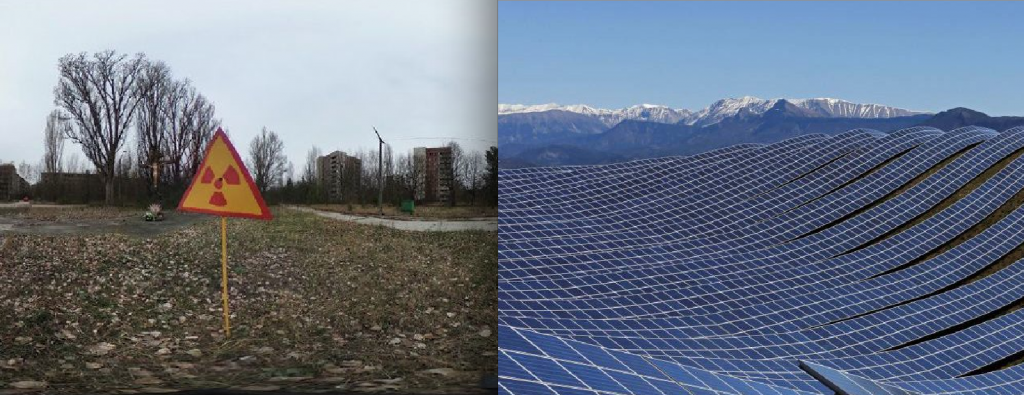1st Solar Panels Sprout at Chernobyl as Ukraine Seeks Investments to Solarize Exclusion Zone

(EnviroNews World News) — Chornobyl, Ukraine — Three decades after the disastrous nuclear accident at the Chernobyl power plant, the site is once again set to produce electricity, but not from atomic reactors — this time from solar panels.
Business Insider (BI) reported that a small 1.5-megawatt (MW) solar installation could be completed by the end of May — the result of a $1.1 million Ukrainian-German joint venture. “The appearance of the first, albeit small, power plant evidences that the project is alive and may be followed by powerful investors,” said Ostap Semerak, Ukraine’s Ecology Minister.
Last year, looking for investors, the Ukrainian official delivered a presentation to major banks, pitching the idea that the still-radioactive site could host more than 1,000 megawatts of solar power generation and 400 megawatts of non-solar renewable energy production, such as biogas.
In addition to the small, nearly completed, German-Ukrainian plant, last November, two Chinese companies, GCL Systems Integration Technology (GCL-SI) and China National Complete Engineering Corporation (CCEC) announced plans to build a 1,000 MW solar farm on the site. Work was due to begin in 2017, but no further developments on that venture have been announced to date.
Under Ukraine’s National Renewable Energy Action Plan, 11 percent of electric power generation is supposed to come from renewable sources by 2020. These could include new and existing wind, solar, hydropower and biomass projects. However, a 2015 report by the International Renewable Energy Agency (IRENA) warns, “Ukraine’s power system is at risk today because of outdated facilities, inefficient plants and aging transmission lines.”
While wildlife has returned to the site of one of the world’s worst nuclear power accidents, and tourists have been allowed inside the exclusion zone for brief, guided visits since 2011, Chernobyl may not be habitable for 20,000 years or more. However, power transmission lines remain in place, making Chernobyl an opportune site for a solar farm.
According to BI, the Ukrainian government has created economic incentives for investment in the area. These include reducing the costs for renting state property by up to 85 percent, and a feed-in tariff system that guarantees power producers a fixed price for each kilowatt of energy they deliver to the grid. Similar pricing systems are in use in China, Germany, Denmark and Spain, and in some U.S. states including California, Washington, Rhode Island and Hawaii.
Although the damaged reactor has been entombed in a concrete sarcophagus since December 1986, a massive new steel arch was installed over the existing enclosure in November of 2016. The new structure measures 531 feet (162 meters) in length and 354 feet (108 meters) high. It’s tall enough to house the Statue of Liberty.
Driving Ukraine’s desire to resurrect Chernobyl as an energy-producing site is the country’s move to reduce its energy dependence on Russia. PV Magazine reports that Ukraine has 54 new solar projects in the pipeline. If the proposed Chinese 1-gigawatt solar farm comes to fruition, it will be able to produce one quarter of the capacity of the Chernobyl nuclear power plant at the time of the 1986 accident. The solar farm would account for about 1.8 percent of Ukraine’s total 2013 power generation capacity, according to IRENA.
FILM AND ARTICLE CREDITS
- Dan Zukowski - Journalist, Author



